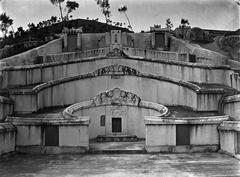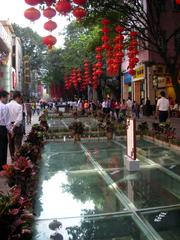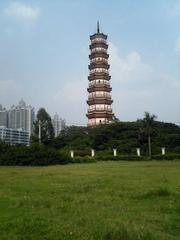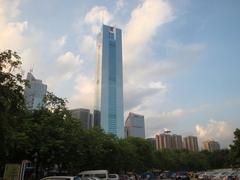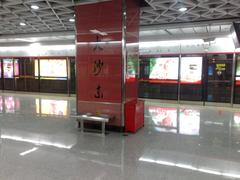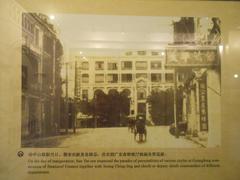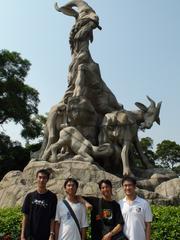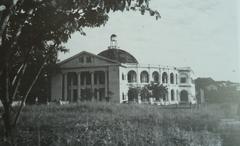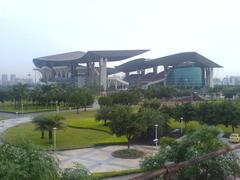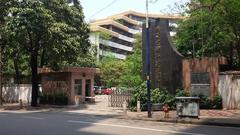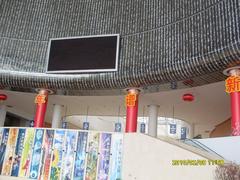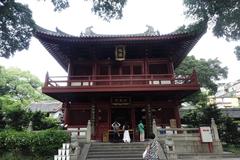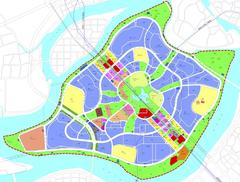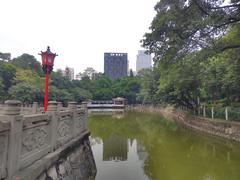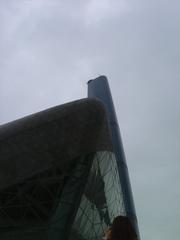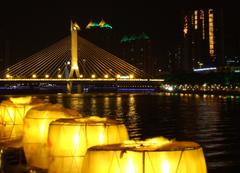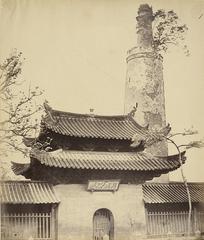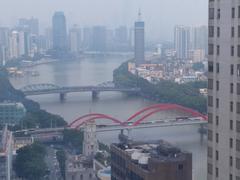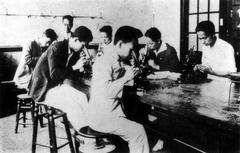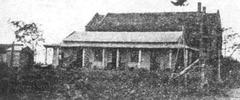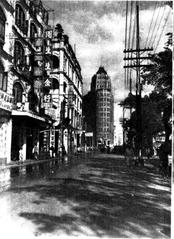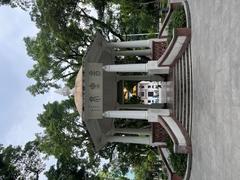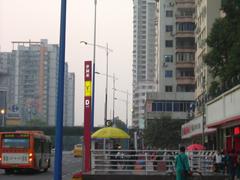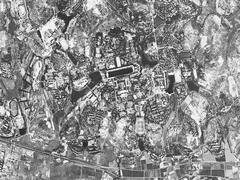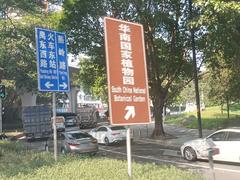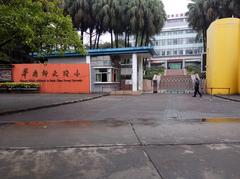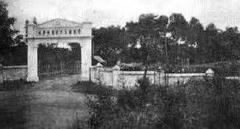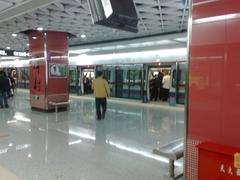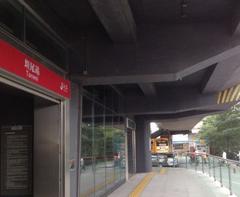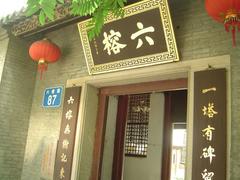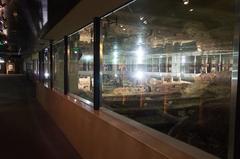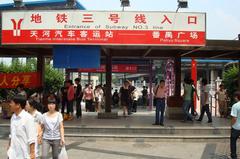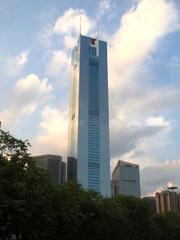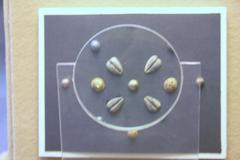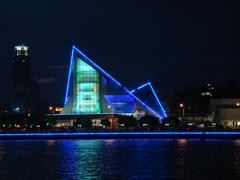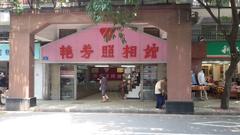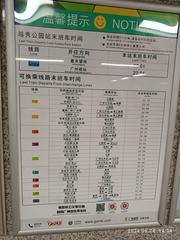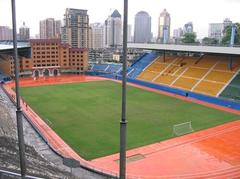Guangdong University Of Foreign Studies
Guangdong University of Foreign Studies Visiting Guide & Guangzhou Historical Site Information
Date: 14/06/2025
Introduction: Guangdong University of Foreign Studies and Its Significance
Guangdong University of Foreign Studies (GDUFS), located in the dynamic city of Guangzhou, China, stands as a distinguished institution celebrated for its academic excellence and extensive cultural heritage. Since its inception in 1965 as the Guangzhou Institute of Foreign Languages, GDUFS has evolved into a vital center for language education, international cultural exchange, and economic development in the Guangdong region. The university’s modern campuses are harmoniously integrated with traditional Chinese landscaping and lie in proximity to Guangzhou’s natural landmarks, such as Baiyun Mountain, offering both educational and scenic value to visitors.
With three main campuses—North Campus (near Baiyun Mountain), South Campus (Guangzhou Higher Education Mega Center), and Dalang Campus—GDUFS presents diverse experiences. Whether you are an academic, a tourist, or an architecture enthusiast, the university’s accessible facilities, tranquil gardens, and vibrant community make it an ideal destination. This guide provides comprehensive information on GDUFS, including its history, cultural importance, visitor details, travel advice, nearby attractions, accessibility, special events, and additional resources. For updates and resources, consult the official GDUFS website and tourism portals like study-in-china.org.
Contents Overview
- Introduction
- History and Cultural Significance
- Visitor Information
- Opening Hours
- Admission and Tickets
- Guided Tours
- Accessibility
- Travel Tips
- Nearby Attractions
- Facilities and Amenities
- Frequently Asked Questions (FAQ)
- Conclusion
History and Cultural Significance
GDUFS was founded in 1965 as the Guangzhou Institute of Foreign Languages and has grown in tandem with China’s increasing global engagement. The university’s campuses reflect this legacy, blending modern architecture with traditional Chinese gardens. GDUFS has played a pivotal role in advancing language education and fostering international exchanges, contributing significantly to the region’s economic and cultural development.
Visitor Information
Opening Hours
- GDUFS campuses, including North Campus (Baiyun Mountain), South Campus (Higher Education Mega Center), and Dalang Campus, are generally open to visitors from 8:00 AM to 6:00 PM daily.
Admission and Tickets
- Entry to university grounds is free. Certain facilities (e.g., libraries, auditoriums) may require prior approval or special arrangements.
Guided Tours
- Guided campus tours are occasionally organized by the university’s International Office. Check the official GDUFS website or contact the visitor center for availability and booking.
Accessibility
- GDUFS prioritizes accessibility with ramps, elevators, and clear signage throughout its campuses to accommodate visitors with mobility needs.
Travel Tips
- Getting There: GDUFS is accessible via Guangzhou’s metro system (stations near both North and South Campuses), as well as by taxi and public bus.
- Best Time to Visit: Spring and autumn offer the most comfortable weather for outdoor exploration.
- Photography: The North Campus, at the foot of Baiyun Mountain, features picturesque settings—lush hills, streams, and traditional bridges—ideal for photography.
Nearby Attractions
- Baiyun Mountain: Adjacent to the North Campus, this renowned scenic area offers hiking, panoramic city views, and historic temples.
- Guangzhou Higher Education Mega Center: Near South Campus, it is home to multiple universities and cultural venues.
- Local Dining: Savor Cantonese cuisine at nearby restaurants and campus cafés.
Facilities and Amenities
- On-campus amenities include cafeterias, bookstores, seating areas, public restrooms, and Wi-Fi.
- Visitor-friendly pathways and accessible restrooms are available throughout.
Frequently Asked Questions (FAQ)
Q: Is visitor parking available?
A: Yes, parking is available but may require a permit or fee. Check in advance for details.
Q: Can visitors access the library?
A: Library access may be restricted; contact the library administration for permission.
Q: Are there public events?
A: GDUFS occasionally hosts conferences and cultural events open to the public. Check the university’s event calendar for updates.
Conclusion
Exploring Guangdong University of Foreign Studies is an opportunity to experience a leading educational institution set amid scenic and culturally rich surroundings. Visitors are welcomed to enjoy the university’s historical significance, modern architecture, and nearby attractions.
For the latest updates, guided tour bookings, and event information, visit the official GDUFS website.
Baiyun Mountain: Introduction and Visitor Guide
Overview
Baiyun Mountain, or “White Cloud Mountain,” stands as one of Guangzhou’s premier natural landmarks. Located near the North Campus of GDUFS, this mountain is famous for its verdant landscapes, tranquil streams, and sweeping city views, making it a popular destination for both relaxation and cultural exploration.
History and Cultural Significance
With a history spanning over 1,000 years, Baiyun Mountain is a symbol of Guangzhou’s spiritual and cultural heritage. Visitors can discover ancient temples, pavilions, and stone inscriptions, all nestled within the natural landscape.
Visiting Hours & Ticket Information
- Hours: 6:00 AM – 9:00 PM daily
- Tickets: Adults RMB 5; Children (1.2m–1.5m) RMB 2.5; Seniors (65+) free; Students with valid ID RMB 2.5. Group discounts for 20+ people are available.
- Tickets can be purchased at entrances or online via official tourism platforms.
Getting There
- Metro: Line 2 to Baiyun Park Station, then a short taxi or bus ride.
- Bus: Several routes, including 41 and 63, stop nearby.
- Taxi: Readily available throughout Guangzhou.
Attractions & Activities
- Hiking Trails: Well-marked paths for all fitness levels.
- Scenic Spots: Moxing Summit, Yunxian Temple, Suoquan Pond.
- Cultural Sites: Temples and pavilions throughout the area.
- Photography: Ideal for capturing natural beauty and city panoramas.
Facilities & Accessibility
- Paved paths and rest areas are suitable for elderly visitors and those with mobility challenges.
- Facilities include restrooms, visitor centers, and food stalls.
- Guided tours in multiple languages can be arranged at visitor centers.
Visitor Tips
- Wear comfortable shoes and bring water, especially in summer.
- Check weather forecasts to avoid slippery trails during rain.
- Early mornings offer cooler temperatures and fewer crowds.
- Respect local customs and preserve the environment.
FAQ
Q: Are pets allowed?
A: No, pets are generally not permitted.
Q: Do children under 1.2m require a ticket?
A: No, entry is free for children under 1.2 meters.
Q: Wheelchair accessibility?
A: Main entrance and some paths are accessible, but many trails are not.
Q: Can tickets be purchased online?
A: Yes, via official tourism websites.
Conclusion
Baiyun Mountain offers a harmonious blend of nature, culture, and recreation. Whether you seek hiking, photography, or cultural sites, it is an essential stop in Guangzhou.
GDUFS: Hours, Tours, and Nearby Attractions – A Detailed Guide
Campus Locations & Accessibility
GDUFS operates three campuses in Guangzhou: North Campus (Baiyun Avenue North), South Campus (Higher Education Mega Center), and Dalang Campus. The North Campus is renowned for its scenic setting beside Baiyun Mountain; the South Campus is located within a bustling university town (GDUFS Prospectus).
How to Get There
- Metro: North Campus via Line 3 (Longgui Station + short bus/taxi ride); South Campus via Line 4 (Higher Education Mega Center North Station).
- Taxi/Ride-hailing: North Campus address: No. 2 North Baiyun Avenue, Baiyun District.
- From Airport: About 30–40 minutes by car to North Campus.
Visiting Hours & Ticket Info
- Hours: 8:00 AM – 6:00 PM for public areas; restricted hours for select buildings.
- Entry Fees: Free campus admission; special events may require tickets.
Campus Highlights
North Campus
- Natural Setting: Trails and gardens at Baiyun Mountain’s base.
- Architectural Features: Modern academic buildings with traditional landscaping.
- International Education: No. 7 Academic Building hub (GDUFS Prospectus).
South Campus
- Mega Center: Intercollegiate events and modern facilities.
Dalang Campus
- Focused on research and training; less frequented by tourists.
Visitor Experience
Guided Tours
- Not routinely offered, but international visitors and prospective students can arrange visits through the Institute for International Education (GDUFS Prospectus). Book at least two weeks in advance.
Self-Guided Visits
- Explore gardens, academic buildings, and public amenities freely.
Events
- International festivals, language days, and cultural exchanges are regularly held (alluniversity.info). Some lectures and exhibitions are open to the public.
Dining, Shopping & Accommodation
- Canteens and cafés serve a range of cuisines, including Cantonese favorites (school.study-in-china.org).
- Bookstores, convenience stores, ATMs, and service centers are available.
- Limited guesthouse accommodations for official guests (ApplyChina Edu), and various nearby hotels.
Accessibility
- Main pathways and buildings are wheelchair accessible; accessible restrooms in key locations.
- Visitors with special needs should contact the university in advance.
Practical Tips
- Mandarin is the main language; English is spoken in international offices.
- Free Wi-Fi is available in public and academic areas.
- Carry identification and observe campus rules.
- Outdoor photography is encouraged; restrictions may apply indoors.
- A Guangzhou metro card is useful for city travel.
- October–March offers the most pleasant climate (school.study-in-china.org).
Nearby Attractions
- Baiyun Mountain: Adjacent for hiking and city views (China Highlights).
- Higher Education Mega Center: Libraries and cultural venues.
- Downtown Guangzhou: Canton Tower, Shamian Island, and the Pearl River (China Discovery).
FAQ
Q: What are visiting hours?
A: 8:00 AM – 6:00 PM daily.
Q: Is there an entry fee?
A: No, campus entry is free.
Q: Are guided tours offered?
A: Yes, by advance arrangement.
Q: Is the campus accessible?
A: Major routes and buildings are wheelchair accessible.
Q: Can I take photos?
A: Yes, outdoors; some indoor restrictions may apply.
Q: How do I reach GDUFS from the airport?
A: By car/taxi, about 30–40 minutes to North Campus.
Contact Information
- North Campus: No. 2 North Baiyun Avenue, Baiyun District, Guangzhou, Guangdong, 510420
- Institute for International Education: No. 7 Academic Building, North Campus (GDUFS Prospectus)
- Official Website: https://iie-en.gdufs.edu.cn/
The Forbidden City, Beijing: Visiting Hours, Tickets, History & Visitor Guide
Introduction
The Forbidden City, in central Beijing, is among the world’s most iconic historic sites. As the former imperial palace of the Ming and Qing dynasties, it functioned as China’s political and ceremonial center for nearly 500 years. Today, it is a UNESCO World Heritage Site, drawing millions of visitors eager to experience its stunning architecture and rich cultural legacy.
History and Significance
Constructed between 1406 and 1420, the Forbidden City spans more than 980 buildings over 180 acres. It was home to 24 emperors and remains a masterpiece of traditional Chinese palatial architecture, with intricate decorations and a layout reflecting ancient cosmology. Its preservation offers insights into imperial power, governance, and artistic achievement.
Visiting Hours
- Peak Season (April 1–October 31): 8:30 AM–5:00 PM (last entry 4:10 PM)
- Off-Peak (November 1–March 31): 8:30 AM–4:30 PM (last entry 3:40 PM)
- Closed Mondays (except public holidays)
Arrive early to avoid crowds, especially during weekends and national holidays.
Ticket Information
- Standard Admission: CNY 60 (peak), CNY 40 (off-peak)
- Discounts: For students, seniors, and children with valid ID
- Tickets available online via the Palace Museum website or at the east gate. Advance booking is highly recommended.
Tours & Events
- Guided tours (in multiple languages) and audio guides are available for rent.
- Special exhibitions, traditional performances, and seasonal events are held throughout the year.
Highlights & Photography Tips
Must-see sites include the Meridian Gate, Hall of Supreme Harmony, Imperial Garden, and Nine-Dragon Screen. The palace’s iconic red walls and golden roofs offer stunning photo opportunities—visit in the morning or late afternoon for the best lighting.
Accessibility & Services
- Wheelchair accessible routes, ramps, and elevators in select locations.
- Visitor centers provide maps, restrooms, and first aid.
- Cafés and souvenir shops are located inside.
Nearby Attractions
- Tiananmen Square
- National Museum of China
- Jingshan Park (panoramic palace views)
Wear comfortable shoes, bring water, and plan at least 3–4 hours for a thorough visit.
FAQ
Q: Can I bring a backpack or tripod?
A: Backpacks are allowed (subject to security checks); tripods require prior permission.
Q: Is photography allowed?
A: Yes, for personal use; no flash or drones.
Q: Are there family-friendly tours?
A: Yes, specialized tours for families and children are available.
Q: How do I get there?
A: Nearest subway stations are Tiananmen East and Tiananmen West (Line 1).
Summary and Call to Action
A visit to Guangdong University of Foreign Studies offers a unique blend of academic prestige, cultural exchange, and scenic beauty. Set beside landmarks like Baiyun Mountain and the vibrant Guangzhou Higher Education Mega Center, GDUFS is open for exploration, learning, and cultural immersion. Free campus access, guided tours, and public events welcome visitors from around the world.
Complement your visit with hikes on Baiyun Mountain, sampling Guangzhou’s renowned cuisine, and exploring the city’s historical and cultural attractions. For optimal experience, visit in spring or autumn, and consult the official GDUFS website and trusted tourism sources for current information.
For further planning, explore Guangzhou’s top attractions and cultural events, and consider using travel apps such as Audiala for guided tours and up-to-date visitor information.
Citations and Links to Official Websites and Reliable Sources
- Visiting Guangdong University of Foreign Studies (GDUFS): A Guide for Visitors, 2025, Guangdong University of Foreign Studies Official Website (https://english.gdufs.edu.cn/)
- Guangzhou Baiyun Mountain Scenic Area Visiting Guide: Hours, Tickets, and Attractions, 2025, Guangzhou Tourism (https://www.chinahighlights.com/guangzhou/top-things-to-do.htm)
- Visiting Guangdong University of Foreign Studies: Hours, Tours, and Nearby Attractions, 2025, Study-in-China.org (http://school.study-in-china.org/guangdong/GDUFS/about.html)
- GDUFS Prospectus (https://iie-en.gdufs.edu.cn/prospects_for_international_students.pdf)
- ApplyChina Edu (https://applychina-edu.com/university/guangdong-university-of-foreign-studies/)
- Alluniversity.info (https://www.alluniversity.info/china/guangdong-university-of-foreign-studies/)
- China Discovery (https://www.chinadiscovery.com/guangzhou-tours/things-to-do-in-guangzhou.html)
